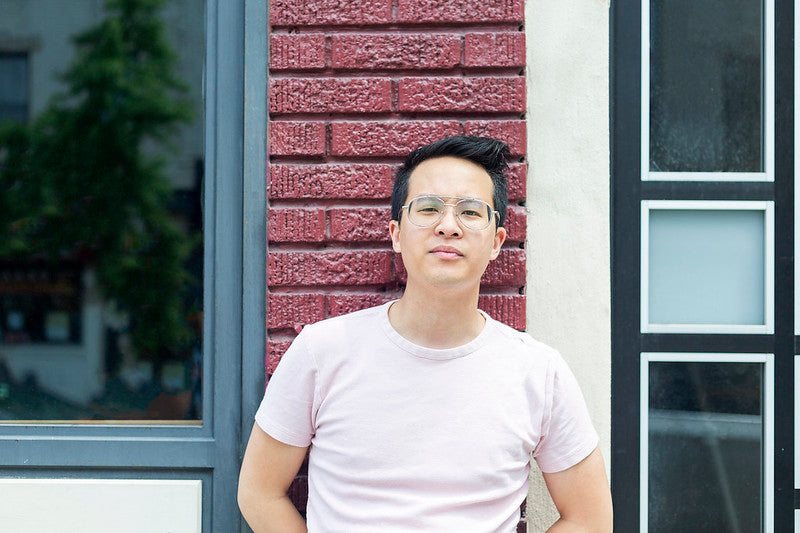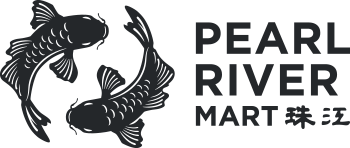
Artist-in-Residence Jeremy Nguyen: Mining Life for Cartoon Gems
We first met New Yorker cartoonist Jeremy Nguyen at the opening reception for former artist-in-residence Dingding Hu. Originally a west coaster, it was his first visit to Pearl River. “I actually got introduced to it through the gallery,” he says. Almost exactly a year later, he’s a co-curator — along with fellow New Yorker cartoonist Amy Hwang — of our latest art exhibition, Asian Babies: Works from Asian ‘New Yorker’ Cartoonists.
We had the chance to speak to Jeremy about how even artists have untraditional paths, who the “Asian babies”in his show title are, and the surprising discovery of a cartoonist father figure.
Tell me a little bit about your background. Where did you grow up?
I was born in Phoenix, AZ. We moved to Portland, OR when I was three or four years old. After first grade we moved to Thailand for a year. My dad had been working at Intel in Portland, and then he got a job designing microchips for a small business in Thailand. Unfortunately that business went under, and we came back to the U.S. We lived in Austin, TX for a year before moving to California. Then I was in the Bay Area all the way until college.
What was it like living in Thailand?
The most memorable thing about it was the school. I went to the International School of Bangkok, which was the biggest school in the city. Every English-speaking kid went there. It was like a college campus. It had two theaters and multiple swimming pools. It was definitely a wild experience.
Have you always been interested in drawing?
Oh yeah. When we were little, my brother and I would make our own superheroes. Like bunnies on skateboards who would use dynamite to power their skateboards.
That’s pretty awesome. Did you always think you’d pursue art as a career?
I think I always thought I would, but I didn’t know if it was going to happen for sure. I knew I was going to keep drawing for sure, but in terms of living off that, I had no assurances, especially with my parents. What changed their minds was junior year in high school, I won the Congressional Art Competition in my district. If you win, your art will hang in the Cannon Tunnel, which connects a congressional house and the Capitol building, and they fly you out to meet your representative and set you up in a hotel and everything.

Teenaged Jeremy with his parents.
Wow! So your parents were impressed?
My mom shrieked in the audience when they announced my name. She does that a lot. That was when I thought this might work. Plus the college I wanted to go to, the Savannah College of Art and Design, gave scholarships to those who won the competition. So it all worked out for me.
What was your thought process in terms of getting a job related to drawing?
I went to high school in Hayward. Our rival high school is Bishop O’Dowd. The graphic novelist, Gene Luen Yang, taught there. His book, American Born Chinese, had just come out and he came to do a lecture at our school. That was really exciting. This was at a time when graphic novels had just broken out as a respectable art form, but they still weren’t really in the adult market yet as a viable alternative to novels. Going into college I thought I’d be doing graphic novels and developing a body of work of longer-form comics. It’s ironic because now I’m doing the tiniest form with literally a single panel.
In college, none of my classmates were sure of job prospects, but at the same time we had the confidence we would have something. We were always told that many of us wouldn’t make it and it would be a struggle. At the time, web comics were just becoming a thing and social media wasn’t as much of a thing, at least compared to now. If you made it, you would work at Marvel or DC or Disney. That’s what the school and industry would tell you. To think commercially.
Did you ever have to do something like that?
No. I got a full-time job at comiXology, which is a comics retailer for the iPad. But I was never interested in illustrating that kind of work. Guys in tights with muscles — it never interested me.
After I left comiXology, I started getting a lot more freelance jobs. Editorial work. I worked with Thrillist. I had other clients and was doing my own comics. I started one called Stranger than Bushwick for Bushwick Daily. That helped me hone my humor and voice. I sort of started making a name for myself among cartoonists and gaining a following in my neighborhood. Then I started submitting to The New Yorker.
What’s the submission process like?
You submit 10 cartoons a week. Now you can do it through Submittable on their website, but there’s also the longtime process that was kept alive by the former cartoon editor, Bob Mankoff. He had this open door policy where people could show up on Tuesdays between certain times —
You mean literally show up at the office?
Yup. People would go in because they knew someone else there. Cartoonists were always bringing each other in. My friend Ellis Rosen had been submitting so he brought me in. I went there the first week of 2017. It was cold and gloomy and right after the holidays. No one was there because they weren’t sure if they should go.
Did you sell something immediately?
No, not in my first week, but later in January. It was my third week of submitting.
That’s still pretty good! Does the new editor continue that tradition?
Yes, Emma Allen is continuing it. When I started, Bob Mankoff had four months left before he retired. With the changeover there was a lot of publicity and a lot more people. They wanted to see what the new editor was about. But after the publicity died down, fewer people came in.
I understand there’s been a sudden increase in Asian cartoonists at The New Yorker. What do you think caused that?
The magazine has always wanted more diversity. Maybe it’s also the age of Instagram. Single panels are perfect for Instagram. We always say that New Yorker cartoons are the original memes.
You know what’s funny is that just this week we found an older cartoon by an Asian American. From 1949 —
What?! Really?!
Yes, his name was Monroe Leung. He worked for Warner Brothers. He had one cartoon in The New Yorker. And there hasn’t been another Asian humorist or cartoonist until 2010 with Amy Hwang.
That’s crazy!
Right?!
Switching gears a little bit, what’s your process when creating a cartoon? Does it start with the idea first or the image? Or a combo of both?
I’m a writer first and an artist second. Some people are the other way around. I do everything on my iPad. I freewrite a lot with a few drawings. I jot down dialogue I’ve heard. Then comes the drawing. Sometimes there’s some kind of wordplay, then it’s about building on that. Then inserting other things. For instance, here a cell phone, God.
Do you believe in inspiration? If so, where do you get it?
I believe in inspiration. It can come from anything, it can be anything. As much as I’d like to stay a home body, I do have to go out in the world. Mining for cartoons. It’s common among cartoonists. We talk about going out into the mines and coming back with a bunch of jewels. Whether from the street or at a diner. Or from taking a trip overseas.
What advice would you have for someone interested in doing what you do?
There’s so much you need to know! It’s hard to pare down to just one piece of advice. I would say that cartooning isn’t just for artists but also for writers. For an illustrator who can write, it’s the best place to be, especially if you’re funny. When I was in college, nobody told us The New Yorker was a viable option. My friend Ellis and I are the only cartoonists from our school to be published cartoonists in the magazine.
[Graphic novelist] Adrian Tomine was definitely an influence. He’s from the Bay Area and also moved to Brooklyn. He got so many New Yorker covers, I actually saw getting a cover as more possible than getting in a cartoon.
What’s something you’re obsessed with right now?
Terrace House is back. [Laughs] It’s a wholesome, Japanese Real World/Big Brother. I went to Japan last November and to a town where they shot a season. I went to to the soba shop run by the dad of one of the cast members. He wasn’t there though!
Last question. For those who don’t know, can you explain the meaning behind the title of your show, “Asian Babies”?
“Asian Babies” is a reference to several things. We often refer to our cartoons as our babies. We talk about publishing them as finding a home. If The New Yorker doesn’t buy it, then maybe somewhere else will. And that’s where that child will grow up, and be fed by eyes and reposts.
Another reference is to The New Yorker not having a long history of having Asian cartoonists. Like I said, there was a more than 50-year gap between the first one, Monroe Leung, and the next, Amy. Also, some of us have only been doing this for two or three years. So we’re the babies, too, in a way. When we first conceived of this show last year, there were only four or five Asian cartoonists published. Then we added four more in the last year.
Another reference is to the specific cartoons the artists have chosen. A lot of them are unpublished but also their favorites. These cartoons might more reflect who we are as artists. The New Yorker ones might not. For example, Suerynn Lee showcases a lot of heavy internal thoughts with eight completely original cartoons that haven’t been seen outside of this show. Evan Lian is sharing cartoons that reflect his pop culture influences and what shaped him as a funny person. The purpose of the exhibition is to show things that the artists are really proud of and reflect who they are. And Pearl River is the perfect home for these babies to live.
ASIAN BABIES: WORKS FROM ASIAN 'NEW YORKER' CARTOONISTS will be on view in our TriBeca gallery from Oct. 4, 2019 through Jan. 12, 2020. Be sure to also check out our interview with ASIAN BABIES co-curator Amy Hwang.
